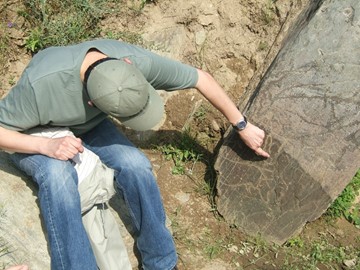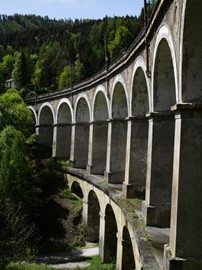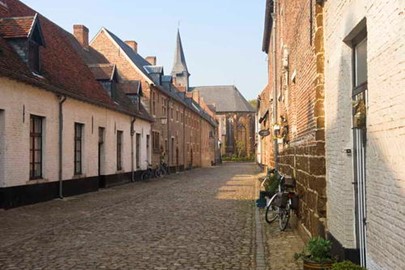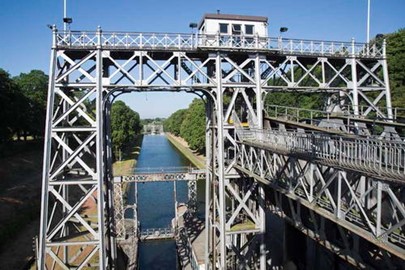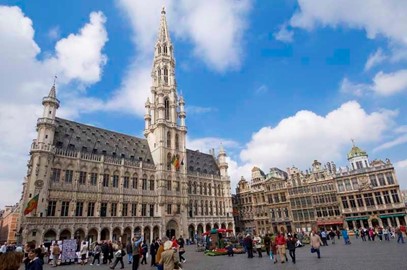search
Beemster Polder
The Beemster Polder, a UNESCO World Heritage site in the Netherlands, is a remarkable example of Dutch ingenuity in land reclamation. Created in the early 17th century by draining a lake with windmills, this site showcases a meticulously planned landscape of fields, roads, canals, and dykes. Its geometric design reflects the Renaissance-era principles of order and symmetry, while its preservation highlights its historical significance as one of the first large-scale polders, demonstrating advanced water man... Read More
Sukur
The Sukur Cultural Landscape, a UNESCO World Heritage site in Nigeria, features a historic hilltop settlement with the Hidi Palace overlooking terraced fields and villages below. Recognized in 1999, it showcases a well-preserved example of traditional land use and architecture, including dry-stone structures and sacred symbols tied to spiritual practices. The site also preserves remnants of a once-thriving iron-smelting industry, reflecting centuries of cultural and economic continuity. Its intact heritage ... Read More
Vigan
Vigan, a UNESCO World Heritage site in the Philippines, is a remarkably well-preserved example of a Spanish colonial town, showcasing a unique blend of Asian and European architectural influences. Established in the 16th century, its cobblestone streets, historic houses, and grand cathedral reflect a rich cultural heritage shaped by trade and colonization. The city’s urban planning and traditional structures, largely intact, offer a glimpse into its past as a key trading hub. Today, Vigan stands as a living... Read More
Puerto Princesa Subterranean River
The Puerto-Princesa Subterranean River, a UNESCO World Heritage site in the Philippines, is a stunning natural wonder featuring a navigable underground river that stretches over 8 kilometers through a vast limestone cave system. This unique ecosystem boasts dramatic karst landscapes, pristine waters, and a rich biodiversity, including rare species like the Philippine cockatoo and monitor lizard. Visitors can explore the river by boat, marveling at its towering stalactites and stalagmites, while its global s... Read More
Kalwaria Zebrzydowska
Kalwaria Zebrzydowska, a UNESCO World Heritage Site in Poland, is a remarkable 17th-century Mannerist architectural and park landscape complex designed as a pilgrimage park. Founded by Mikołaj Zebrzydowski, it features a Baroque basilica, a Bernardine monastery, and 42 chapels scattered across a scenic landscape, symbolizing the Passion of Jesus Christ and the life of the Virgin Mary. Recognized in 1999 for its cultural and spiritual significance, it remains a vital pilgrimage destination, blending natural ... Read More
Laurisilva of Madeira
The Laurisilva of Madeira, a UNESCO World Heritage site in Madeira island, Portugal, is a rare subtropical laurel forest renowned for its rich biodiversity and ancient ecosystem. This lush, evergreen forest features unique plant species, many of which are endemic, thriving in a misty, temperate climate. It serves as a vital habitat for numerous birds and invertebrates, showcasing an exceptional example of ecological preservation. Recognized for its scientific and conservation value, it stands as a living re... Read More
Sighisoara
The Historic Centre of Sighişoara, a UNESCO World Heritage site in Romania, is a remarkably well-preserved medieval town founded by German craftsmen and merchants in the 12th century. Its cobblestone streets, colorful buildings, and fortified walls showcase a unique blend of Gothic, Renaissance, and Baroque architecture. Notable landmarks include the Clock Tower, the Church on the Hill, and the birthplace of Vlad the Impaler, offering a glimpse into its rich history and cultural significance. This picturesq... Read More
Wooden Churches of Maramures
The Wooden Churches of Maramureş, a UNESCO World Heritage site, are a collection of historic Orthodox churches renowned for their unique architecture and cultural significance. Constructed primarily in the 17th and 18th centuries, these churches feature tall, slender wooden towers and intricate shingle roofs, showcasing exceptional craftsmanship. They serve as a testament to the rich religious traditions and artistic heritage of the local communities, blending Gothic and vernacular styles. Preserved as outs... Read More
Dacian Fortresses
The Dacian Fortresses of the Orastie Mountains, a UNESCO World Heritage site in Romania, are a remarkable collection of six ancient strongholds built by the Dacian civilization between the 1st century BC and 1st century AD. Constructed using stone, wood, and earth, these fortresses served as military, religious, and economic centers, showcasing advanced engineering and strategic planning. They stand as a testament to the Dacian people's resistance against Roman conquest, with Sarmizegetusa Regia being the m... Read More
Western Caucasus
The Western Caucasus, a UNESCO World Heritage site in Russia, is renowned for its stunning natural beauty and ecological significance. This region showcases a diverse range of landscapes, from snow-capped mountains to lush forests, and serves as a critical habitat for numerous rare and endangered species. Its unique geological formations and rich biodiversity highlight its importance as a pristine example of temperate ecosystems, drawing attention for both conservation efforts and scientific study.
Brimstone Hill Fortress
Brimstone Hill Fortress, a UNESCO World Heritage site, is a well-preserved 17th-century military fortification showcasing British colonial architecture and engineering. Constructed by African slaves, it features robust stone walls, barracks, and cannons strategically positioned to defend against European rivals. The fortress served as a key stronghold during conflicts in the Caribbean, reflecting its historical significance as a symbol of colonial power and resistance. Today, it stands as a testament to the... Read More
iSimangaliso
iSimangaliso Wetland Park, a UNESCO World Heritage site in South Africa, is a biodiverse coastal reserve featuring a stunning mosaic of ecosystems, including swamps, lakes, beaches, coral reefs, and savannahs. Home to an array of wildlife such as hippos, crocodiles, and rare bird species, it holds significant ecological value and offers a pristine natural landscape. The park also encompasses historical and cultural landmarks, reflecting its deep-rooted heritage and importance to conservation efforts.
Fossil Hominid Sites
The Fossil Hominid Sites of South Africa, a UNESCO World Heritage site, are renowned for their exceptional contribution to understanding human evolution. These sites have yielded an extensive collection of fossilized remains of early hominids, including Australopithecus and Homo species, dating back millions of years. The discoveries, coupled with archaeological evidence, provide critical insights into the physical and cultural development of human ancestors, making it a globally significant paleontological... Read More
Robben Island
Robben Island, a World Heritage site in South Africa, is a small island off the coast of Cape Town with a rich historical legacy. It served as a place of banishment, isolation, and imprisonment for centuries, most famously as a maximum-security prison during the apartheid era, where political prisoners, including Nelson Mandela, were held. Today, it stands as a symbol of resilience and the triumph of the human spirit, offering visitors a poignant look into its past through preserved prison buildings and gui... Read More
Ibiza
Ibiza, a UNESCO World Heritage site in Spain, is renowned for its rich biodiversity and vibrant cultural heritage. The island features unique ecosystems, including Posidonia oceanica seagrass meadows, which support diverse marine life and contribute to its ecological significance. Its cultural landscape reflects a blend of Phoenician, Roman, and medieval influences, evident in historic fortifications, archaeological sites, and traditional practices that have shaped its identity over centuries. This combinat... Read More
San Cristóbal de La Laguna
San Cristóbal de La Laguna, a UNESCO World Heritage site in Spain, is a historic city founded in the late 15th century, renowned for its well-preserved colonial architecture and urban layout. It served as a model for many colonial cities in the Americas, featuring a grid pattern with vibrant streets, churches, and convents. The city’s cultural significance is highlighted by its rich history as the former capital of Tenerife and its blend of European and indigenous influences. Today, it stands as a testament... Read More
Ancient Merv
Ancient Merv, a UNESCO World Heritage site in Turkmenistan, stands as a testament to millennia of human civilization, once thriving as a key stop on the Silk Road. This archaeological treasure showcases remnants of successive empires, including the Achaemenids, Parthians, Sassanids, and Islamic dynasties, with structures like mausoleums, mosques, and fortified walls. Its historical significance lies in its role as a cultural and economic hub, blending Eastern and Western influences until its decline after a... Read More
Neolithic Orkney
The Heart of Neolithic Orkney is a UNESCO World Heritage site featuring a remarkable collection of prehistoric monuments. This archaeological treasure trove includes a well-preserved stone village, a mighty stone circle, and an impressive chambered tomb, all dating back over 5,000 years. These ancient structures offer a fascinating glimpse into the lives and beliefs of Neolithic people, showcasing their architectural prowess and cultural sophistication.
Hoi An
Hoi An Ancient Town, a UNESCO World Heritage site in Vietnam, is a remarkably well-preserved trading port dating back to the 15th century. Known for its blend of local and foreign architectural influences, the town features narrow streets lined with colorful lanterns, historic wooden buildings, and ornate temples. Once a bustling hub for merchants from China, Japan, and Europe, it now thrives as a cultural landmark, offering a glimpse into its rich past through its timeless charm and serene riverside settin... Read More
My Son
My Son, a UNESCO World Heritage Site in Vietnam, is a remarkable collection of ancient Hindu temples built by the Champa Kingdom between the 4th and 13th centuries. Dedicated primarily to the deity Shiva, the site features intricately carved red-brick towers that reflect a unique blend of Indian and local architectural influences. Despite damage from time and conflict, including the Vietnam War, its well-preserved ruins offer a vivid glimpse into the spiritual and cultural history of the Cham civilization. ... Read More
Côa Valley and Siega Verde
Côa Valley and Siega Verde, a UNESCO World Heritage site in Portugal and Spain, recognized in 1998 and extended in 2010, are open-air rock art sites featuring thousands of Paleolithic engravings from 22,000 to 10,000 BCE. Etched into schist along river valleys, these carvings of horses, aurochs, and hunters reflect humanity’s earliest artistic expressions. This transnational site showcases Iberia’s prehistoric heritage, preserving a rare outdoor gallery of ancient life across borders.
Semmering Railway
The Semmering Railway, a UNESCO World Heritage site in Austria, is a pioneering engineering marvel renowned for its scenic mountain route. Completed in 1854, this early railway weaves through rugged alpine terrain with viaducts, tunnels, and stone bridges, blending seamlessly into the landscape. Celebrated for its technical innovation and aesthetic harmony, it transformed travel and tourism in the 19th century. This historic rail line stands as a testament to human ingenuity and the beauty of Austria’s natu... Read More
Flemish Béguinages
The Flemish Béguinages are a UNESCO World Heritage site in Belgium, recognized for their unique historical and cultural significance. These enclosed communities, established in the Middle Ages, were home to the Beguines—lay religious women who lived in semi-monastic conditions without formal vows. The sites feature a blend of architectural styles, including houses, churches, and communal spaces, reflecting their self-sufficient lifestyle. Preserved as peaceful enclaves, they offer a glimpse into medieval so... Read More
The Four Lifts
The Four Lifts, a UNESCO World Heritage site in Belgium, are a remarkable example of 19th-century hydraulic engineering. Built between 1888 and 1917, these four boat lifts were designed to navigate a significant elevation change along a historic canal, using an innovative counterweight system to raise and lower vessels. Recognized by UNESCO in 1998, they remain the only lifts of their kind still in original working condition, offering insight into Belgium’s industrial past. Today, they serve recreational bo... Read More
La Grand Place
La Grand-Place, a UNESCO World Heritage site in Belgium, is a stunning historic square renowned for its architectural grandeur and cultural significance. Surrounded by ornate guildhalls and the impressive Town Hall, it showcases a mix of Gothic, Baroque, and Louis XIV styles, reflecting centuries of prosperity and civic pride. Recognized by UNESCO in 1998, it remains a vibrant public space, hosting events and drawing visitors with its intricate beauty. The square stands as a testament to Belgium’s rich hist... Read More




















